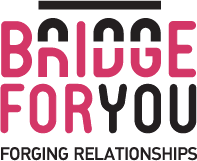Judith Radnai-Toth is a Hungarian Employer Branding and Talent Strategist, and Founder of Talentbrand.io, who has already managed several employer branding and talent acquisition projects at a couple of European companies. Over the past few years, she has worked with many kinds of organizations, big and small: startups, multinational organizations and even fast-food chains.
We asked her opinion about the importance of diversity management and the differences between the Hungarian and Spanish events & employer branding scene.
BFY: What were your 3 favorite projects from the last 5 years?
JR: What I like the most is working with companies, where the leadership team is engaged, understands the importance of employer branding and handles it strategically. I can’t choose one favorite project, but if I had to I’d say it was Prezi, one of the most successful Hungarian startups. I truly enjoyed working with the company, because of its great culture and leaders.
 BFY: Your focus is on employee experience design, HR service design and diversity branding. Why is employee experience as a topic important?
BFY: Your focus is on employee experience design, HR service design and diversity branding. Why is employee experience as a topic important?
JR: We live in a world where experience is king. As customers, we are getting used to perfectly designed moments, and products, services, so it is not surprising that as employees we expect the same: seamless, personalized experience at the workplace. Companies need to adapt to this new world because today’s talent has the power of choice. When they choose a job or think about staying or leaving, they assess their options and make decisions not only based on salary and location, but also on how the company makes them feel. Their opinion of a workplace is formed based on their perceptions about the company – which includes all brand-related experiences. That’s why it is important to focus on the employee experience. If it is designed well and optimized, the organization can attract, retain and motivate top talent.
BFY: Can you explain to us in more detail what employee experience design means?
JR: Employee experience design is very similar to customer experience design. We use the same tools, methodologies. We map the whole employee journey from recruitment to exit, define the moments that matter and look for pain points, frustrations. Then we brainstorm to generate ideas to improve the experience, then prototype and validate the best ones just as in CX design. The difference is that our customers are the employees, the candidates, the partners. During the process, it is very important to align the experience with the Employer Brand so there are no gaps between what the company promises to candidates and what it delivers to its employees.
BFY: What do you think, as a founder and an EX expert, is most important for employees in the workplace?
JR: People are different, and so are workplaces. I don’t think there is one universal solution to improve the employee experience. Many aspects affect our experiences as employees: work environment, company culture, leadership, organizational behaviors, etc. We need to understand the current experience, the needs and wants of our employees first. It is important to talk to our employees and ask what is most important for them, to see what needs to be developed within the organization.
BFY: You managed projects and organized events for both global and Hungarian clients, and you have also lived in Barcelona. What is the difference between the labor market in Spain and Hungary?
JR: Actually, they are not very different. There are many similarities between the two cities: both of them are kind of startup hubs struggling to attract top tech talent. Many expats relocated to these cities over the years, but still, the biggest challenge for companies in both places is to find the talent they need to meet their business objectives. I think to be successful, companies in both locations should focus more on employer branding and location branding so they can attract top talent from abroad.
BFY: Can you tell us a bit more about your experiences in location branding? Do you have any tips or hints about how companies can attract talent with location branding tools?
JR: The biggest challenge for any startup is to find the talent that will enable real growth. Traditional international recruitment practices can be really expensive and inefficient, especially for organizations who operate in locations that are not so popular among top tech talent. And that is where location branding can help. The key is for local organizations and their employees to work together and spread the word about the location as a place to live, work and develop. Communication can be backed with events, like tech conferences and meetups, which allow tech talent to visit and get to know these places, and build connections. It can be a great tool to support international recruitment efforts.

BFY: You are very active in the Hungarian Employer Branding scene: how would you describe it? Do companies have a good understanding of HR Marketing and EB?
JR: By now I think many companies and HR professionals understand what employer branding is about, but still what I see is that while some companies employ an employer branding specialist/team, or hire a consultant, most of them have no dedicated budget for employer branding. They handle EB as a project and don’t have a long term strategy. They need to understand that employer branding can’t simply be about a few campaigns and some bean bags in the office. It has to be a part of the business strategy and it has to be aligned with all organizational experiences.
BFY: In your volunteer time, you advocate for diversity - how diverse is the Hungarian labor market? What are the biggest challenges you are faced with in this area?
JR: There are many challenges in this area right now in Hungary. One of them is that companies should be more inclusive to be able to attract a more diverse workforce. People would like to work for companies where they can be sure the only thing that matters is their performance, regardless of their gender identity, of their ethnicity or of whom they love. So it is important to take steps to build an inclusive culture, design an HR process that minimizes bias and communicate D&I (diversity & inclusion - editor) efforts internally and externally. The truth is that diversity matters for top talent, so to be able to build diverse high-performing teams, companies need to demonstrate diversity in their employer branding communication as well.
BFY: What initiatives are you particularly proud of?
JR: I am very proud that as a founder I joined WeAreOpen’s initiative this summer. Forbes magazine featured a statement and signatures of 100 business leaders, including mine, who believe openness and diversity should be among the core values of a company.
BFY: What employer brands inspire you?
JR: For example, there is one campaign from Adidas, which is very attractive to me. Besides that, I would also mention a super Employer Branding video from NHS. But what I can most recommend seeing is the "going places campaign" from Heineken, which is one of my favorites.






